15 minutes by bus from Burgos and we are in Vivar del Cid, the birthplace of El Cid and the start of the 1500 km Camino del Cid.
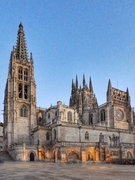


15 minutes by bus from Burgos and we are in Vivar del Cid, the birthplace of El Cid and the start of the 1500 km Camino del Cid.
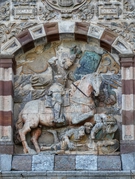
We left Burgos on a cool clear morning for a steady climb through fields and forests most of the way to Modúbar de San Cibrián, passing Cortes and the Monasterio de San Pedro de Cardeña.
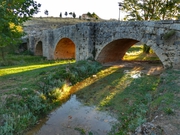
Cold in the morning, hot in the afternoon, we passed through Los Ausines and Cubillo del Campo on the way to Mecerreyes. We didn’t encounter anyone on the country tracks and the villages were almost deserted too.
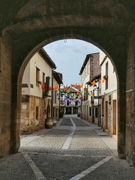
Covarrubias (pop 521) is is a medieval town listed as one of the The Most Beautiful Villages of Spain. There’s a common theme to all the buildings in the old centre unaffected by modernity.
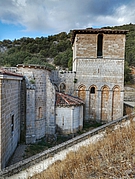
The Monastery of San Pedro de Arlanza isn’t on the Camino del Cid but well worth a detour. Dedicated in 912, it’s one of the monasteries from the foundation of Castile.
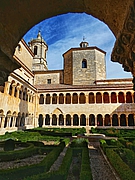
Santo Domingo de Silos (pop 176) is an attractive Castilian town focused on the Monastery. Destroyed by the Muslims, rebuilt by Santo Domingo around the year 1000 it became a great spiritual, cultural and artistic center during the 11th to 13th centuries.
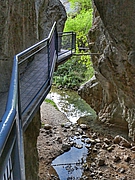
A few kilometres from Santo Domingo de Silos, La Yecla is a deep and narrow gorge carved in limestone with a series of suspended walkways. It’s only about a 7 km return walk.
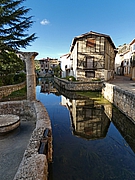
It was cold, 4°C this morning but a 100 meter ascent in half a kilometer to start soon warmed us. After a while we entered a pine forest walking along sandy tracks covered with pine cones – easy of the feet and the most pleasant walking of our Camino del Cid so far.
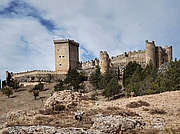
The Camino del Cid stage for today would by 37 kilometers, too much for us so we decided to deviate to the Pueblo Magico of Peñaranda de Duero by taking the morning bus to Coruña del Conde and walking from there.
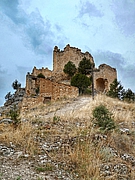
From Peñaranda de Duero we walked south to La Vid following farm tracks, avoiding the tarmac and then east to pick up the published walking route from Langa de Duero to Castillejo de Robledo.
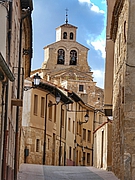
Stage 9 of Camino del Cid finishes at Miño de San Esteban after 15 kilometres but there was no accommodation available so we took a taxi there and walked on the 17 kilometres to San Esteban de Gormaz.
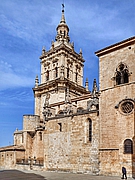
We walked this stage in 2019 but in the opposite direction. It’s a lovely walk and we were keen to do it again. El Burgo de Osma is a beautiful city of glorious streets, stately homes and religious buildings.
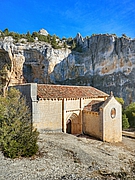
I saw “The Templar hermitage at the heart of the Iberian Peninsula” on BBC in 2020 and I wanted to go there. Being equidistant from the eastern and western edges of the Iberian Peninsula, the Knights Templar considered this place to be the centre of the world.
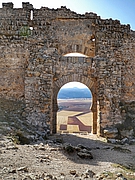
Gormaz Castle is an impressive Islamic caliphate fortress built in the 9th century. El Cid was Lord of Gormaz and Mayor of the fortress in 1087.
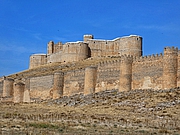
From Quintanas de Gormaz to Berlanga de Duero was a good day’s walking on country farm roads with a small village every hour – Recuerda, Morales and Aguilera.
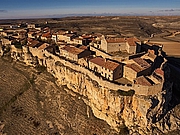
We took a day away from Camino del Cid to visit the walled medieval village of Rello and the Mozarabe Hermitage of San Baudelio.
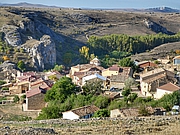
Berlanga de Duero to Retortillo de Soria passing the depopulated but beautiful villages of Brias, Abanco and Torrevicente.
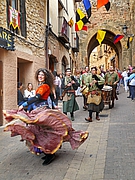
On our final day we left Castilla y León and entered Castilla-La Mancha to arrive at the medieval town of Atienza passing through Miedes de Atienza (pop 60) and Romanillos de Atienza (pop 42).
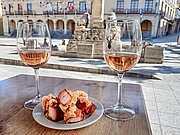
To arrive in Atienza where the next stage of Camino del Cid starts: a 24 hour flight to Madrid, two nights; bus to Soria, one night; bus to Cincovillas, walk 5 km to Atienza.
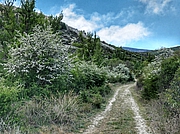
We took a short cut walking 8 km on the CM-1001 road which reduced the day to 24.5 km, passing through Naharros and Robledo de Corpes.